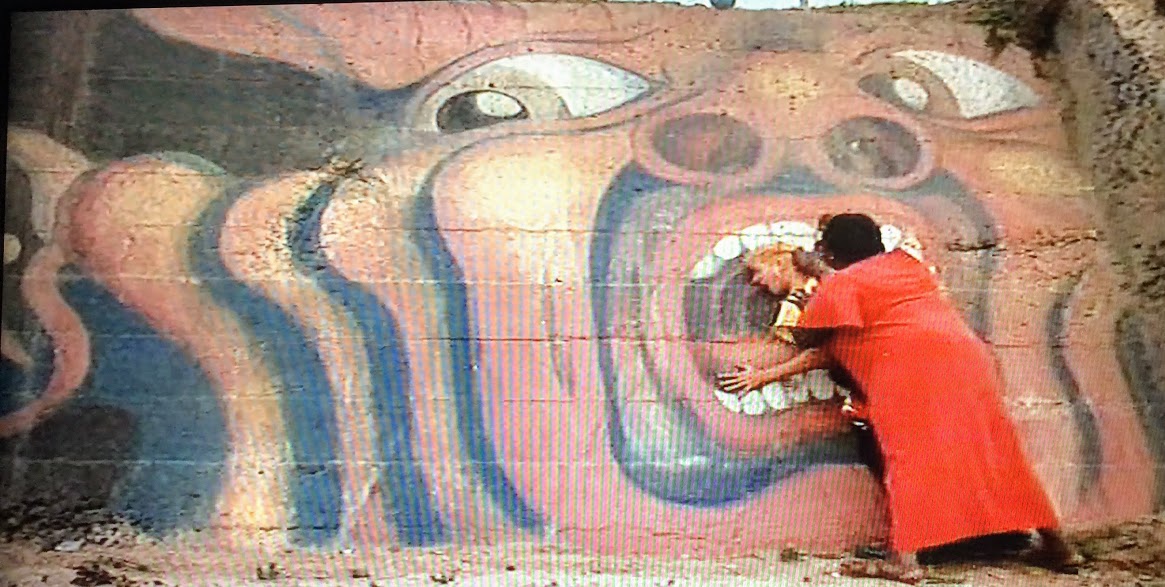
Review. Behold, my children. My magnum opus: Surf Nazis Must Die
“There is no way that you are ever going to convince me that this is a good movie.” – My Glorious Spouse, 2020
Here we are, at the precipice of greatness. Finally.
Let me tell you a story. A love story.
Back in the old days of chunky rental boxes of VHS tapes, I remember first seeing the glistening box in the Horror section of Movie Mania. Back in those times, children, one would hitch up their horse and cart, traveling three miles in the snow, uphill, to rent a free horror movie every Monday night. And, after the arduous trek back, would blow the dust from the VCR player and jam that precious tape in to watch a hidden relic of the past. And it was worth it. It was damn well worth it.
One of those Mondays was very special for me and was the day I watched “Surf Nazis Must Die”. I fell in love – hard. I don’t want to say it changed my life, but here I am reviewing movies and getting paid, so you tell me, pal.
When I first met Glorious Spouse as an awkward teenager, this was a movie I shared on one of our dates. When I met new friends, I shared this. When I met GS’s friends, I shared this. It was not only a beautiful piece of schlock I admired to be shared, but also a litmus test; an endurance and reactionary experiment for me to gauge them. Did they see what I saw??? Could they feel what I felt?
No. Obviously. You saw the quote and obviously it wasn’t a deal-breaker, but it became the anathema I earned, as in, “Yeah, but you also think ‘Surf Nazis’ is good (so your opinion of movies is questionable)”.
Yeah, I did think it was good.
And you know what…I friggin’ still do.
So, my friends, let me try to open your mind and bring you into the nightmarish world of loss, madness, and revenge. In honor of Black History Month and in memory of Gail Neely, who played one of my favorite protagonists in all film history, I present to you: the review and exploration of Surf Nazis Must Die.

The Plot:
In the near future, a devastating earthquakes leaves the California coastline in shambles. The beaches are controlled by gangs, one of them being surf-friendly Neo-Nazis under the regime of “Adolf”, the self-proclaimed “Führer of the new beach”. Using the calamity and chaos to his advantage, he gathers the other gangs with the message of join his order or die on the sand.
During the same tragedy of the earthquake, widower Eleanor Washington has lost her only home. Her adult son helps her into her new residence, a senior home, where she finds it difficult to adapt. She’s seen as a trouble-maker and instigator – smoking, gambling and not being complacent in her new rigid and infantilizing atmosphere.
The two stories intertwine when Mama Washington’s son is viciously murdered by Adolf and his gang. After losing the only thing in her life, Mama begins her descent into anger, madness and revenge against those who took her son’s life. Let it be known that Surf Nazis must die!!!
The Nazis:
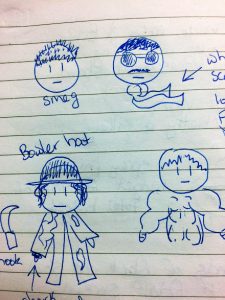
Most of the narrative is focused on the Surf Nazis and their interactions. Even the first shot is that of a young child, punk hair and cheeks painted with swastikas, shouting back cadenced authoritarian rhetoric to a stoic “Adolf”, within a group of other young children. Some of the Nazis have original Reich monikers like Eva, Adolf’s bitch (her words, not mine), and Mengele (the Valley-speaking Q who creates surfboard switchblades and whatnot). However, others do not share in the Nazi heritage: Brutus (the sensitive fighter), Hook (Alex from A Clockwork Orange meets Captain Hook), and Smeg (oh, I’ll talk about him later).
And then we have Adolf. Who is….dramatic. Laughably and adorably so. So much drama in this one. Drama and dreams. Dreams of leading all of the gangs of the beach (kind of like the beginning of Warriors, but as a Nazi d–head).
The Nazis live on the beach and in abandoned buildings, struggling through their existence by extorting other gangs, stealing from “normal” people, and eliciting the help of the young and dumb (we’ll get to Smeg, don’t worry). They are not powerful, really. They are sad. They are taunted by the other gangs. They sustain themselves by killing and eating wild pigs (?). And just as often as they band together, they tear each other apart. They are vicious and damaged. They are fumbling in their pursuit of power, and aimless in their violence. They have no agency, engagement, or efficacy.
The Mama:

Enter our protagonist. And yes, it could be easy to point out that there are certain characteristics, maybe even certain stereotypes, that are part of the “Mama” Washington character. She is a strong Black woman – Bible-carrying but is also sassy and sharp-as-tacks. She smokes cigars and gambles with her new friends at the senior home, telling them that she’s going to bring life into “them bitches”.
I admit, there are almost Madea-esque traits, but I would say whereas the usual Older Black Female character is sometimes a cruel, shrieking portrayal with a touch of bitterness, Gail Neely plays Mama with so much heart and warmth, it’s hard not to be endeared by her performance. There are some moments of audacity, but it’s never cruel; it’s at the core of the character. There are genuine moments of tenderness and vulnerability within her strength and conviction. Gail Neely brings such life and grit to this character. She is an unconventional hero and badass. Yes, this character was written by a white male, but I believe it was done so with endearment to the character and her role as victim and avenger.

And this is evident by the juxtaposition of her core concepts and motivations from the Nazis. She is the anti-Adolf. She is older. She is woman. She is Black. She is a nurturer and mother. She has purpose. She has agency. She has engagement with those around her. And you bet your sweet toots that she has efficacy. Mama Washington has power in her own life, even when she is deemed powerless (**see chainsaw vs tree scene**). She is the very opposite of Adolf and the Nazis, and it’s utterly surprising find something so rounded and in-depth in something so…Troma, let’s say?
The 21st Century Schizoid Man
There are really good shots in here. Really. Very clever camera work, no joke. I wrote that down a few times in my most recent viewing.
However, the most memorable and recognizable shot from the film is the Schizoid Man. In this incredibly dramatic point, Mama comes in first contact with one of the Nazis as he’s describing the death of her son. She grabs him and slams his head against a graffiti-painted wall. But it’s not just graffiti:

This is actually King Crimson’s album cover for 21st Century Schizoid Man, which is also featured as a song of general chaos, war imagery, death, destruction, and the desensitization of the human spirit from those elements. It was most likely written in response to the Vietnam War.
However, in this powerful moment, the art of the album is appropriated and re-contextualized. We see the pale head of a Neo-Nazi pushed against the mouth of a Black man, silently screaming in anguish. We see the older Black hand of a victim pushing the young and naïve racist perpetrator into that scream, into that direct confrontation of his superficial ideology and his subservient actions. During which, she becomes numb to the violence (and faceless) she is subjected and now a part of.

I could probably write forever about that scene. I could write forever about most scenes that feature Mama Washington because the incredible job that Gail Neely does. Let’s everyone take the day off of work to discuss how incredible her performances are!

The Homework: Thick Brain Roll Juice
I read up some for this one. I did my homework. Originally, I actually was going to argue that they aren’t really Nazis, but counter-culture, living in a depraved environment with limited resources because they are bored, “too hip” and white.
While some of that may be true (youpieceofcrapSmeg), the homework I did proved me wrong. Terrifyingly wrong.
It’s easy to watch this film for the laughs, for the fun, for the tie dye beach gang, Adolf’s awkward line reads, the gobs of slow-mo surfing, and Gail Neely’s poetic performance.
But the fact is that it’s not just a fun vacuum of cinematography and over-the-top acting. Watching this, it’s easy to dismiss this as a campy romp. Like I said, I was originally going to talk about turf wars and lack of seething resentment because they didn’t really strike me as Nazis. Assholes, yes. Nazis, no.
In fact, the very first paragraph of An Ethnographer Looks at Neo-Nazi and Klan Groups The Racist Mind Revisited by Raphael S. Ezekiel speaks exactly to that point and to my casual dismissal,
Americans today often learn about Nazis and the Ku Klux Klan through television clips of rallies or marches by men uniformed in camouflage garb with swastika armbands or in robes. These images often carry commentary implying that the racist people are particularly dangerous because they are so different from the viewer, being consumed by irrationality. The racists and their leaders are driven by hatred…
Raphael S. Ezekiel
The same can be said for the films that we watch, Surf Nazis Must Die included. How Hollywood portrays the Nazi (Neo- or otherwise) changes over time. Our limited scope of understanding changes with those waves of popular culture, whether one is the impact of the other.
In a paper by Geoffrey Cocks entitled Hollywood Über Allies: Seeing the Nazi in American Movies, Cocks describes the road to Surf Nazis and beyond in the public cinematic sphere:
By the late 1960s, a skeptical, critical, and even cynical consciousness about the contemporary world had entered even Hollywood. Newly empowered teenage consumers and the Vietnam draft made the American film Nazi-unlike 1940s war films-big antiwar box office material because the Nazi now stood for any totalitarian oppression for young radicals outraged by American racism and the war in Vietnam. Bank of America became Bank of Amerika, and police became “fascist pigs.”
The 1970s in America brought a wave of still more problematic interest in Hitler, the Nazis, and the Holocaust, in which a mix of agnosticism, cynicism, hedonism, and nihilism prevailed over 1960s iconoclasm and idealism. The Nazi became a “floating signifier” for trivial fanaticism or madness: a “lawn Nazi,” a “feminazi,” a film demanding that Surf Nazis Must Die (Peter George, 1987)
From the 1980s on, ever more of international cinema hewed to the Flollywood-style entertainment movie. With the exception of a few films about American neo-Nazis, the Nazi and the German became less topical and central, even those about the war, and so tended to serve only the blandly realistic or the distantly metaphorical. But the Nazi yet retains his cinematic potency.
The weakness in Tarantino’s postmodern play is the weakness that had been growing and maturing in film ever since the Second World War: cinema grows so self-referential, so caught up in the economic conversation between Hollywood and American culture, that it ceases to be critically reflective.
Cocks, Geoffrey. “Hollywood Über Alles: Seeing the Nazi in American Movies.” Film & History: An Interdisciplinary Journal, vol. 45 no. 1, 2015, p. 38-53. Project MUSE muse.jhu.edu/article/589137.
So, let’s dumpster-dive into the history a little to separate fiction and fact, or maybe even find some similarities. Before the 80’s, when this movie was filmed, the KKK was the anchor for much of the white power movement and didn’t mix with the emerging Nazi party in the US. But then the 80’s came with its Flashdances, Reaganomics, and Rubicks Cubes, and the two more or less started to merge into a smelly shitstain of grossness, and “concepts/symbols started being used indiscriminately between the groups“. (Ezekiel, pg. 52)
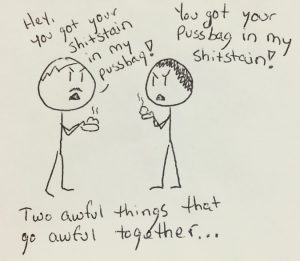
This happened partly because “some separatists feel that the old Klan is a ‘dinosaur,’ not aggressive and technical enough in its approach of asserting dominance and power. This view has led to the formation of other divisions of hate groups.” (Anderson, James F., Laronistine Dyson, and Willie Brooks Jr. “Preventing hate crime and profiling hate crime offenders.” Western Journal of Black Studies 26.3 (2002): 140) By 1994, (four years before Surf Nazi’s first DVD release) different watchdog groups estimated hard-core militant membership around 23,000 to 25,000, with approximately 150,000 sympathizers who subscribed to the ‘zines, and another 450,000 people who read the issues for the articles but didn’t buy. (Ezekiel, pg. 52-53)
During that time, between 1955 and 1998, white racists were responsible for more than a third of deaths related to domestic terrorism between, excluding the 168 individuals killed in the Oklahoma City bombing (Parkin, William S., et al. “Ideological Victimization: Homicides Perpetrated by Far-Right Extremists.” Homicide Studies, vol. 19, no. 3, Aug. 2015, pp. 211–236, doi:10.1177/1088767914529952.). And people of color are more often. Just in 1997, of the hate crimes committed, 8,049 bias-motivated criminal incidents were reported. Of these incidents, 4,710 were motivated by racial bias (Anderson).
But…but surfing! And….fun! And….switchblade surfboards! They just silly-billy Nazis!

Sure, let’s talk about the group – it’s dynamics and how it operates.
As previously mentioned, the first shot of the movie is at youth gathering with Adolf, establishing the supremacy of the Surf Nazis as the masters of the beaches. In fact, that the beach is in a bitter and bloody turf war, mostly because of the Nazis, which isn’t that surprising: “The movement makes its claim, in the ideology, to a turf and declares its role as defending that turf.” “…an ideology that glorifies toughness and fears tenderness or nurturance as weakness.” (Ezekiel) And we’ll circle back to the high tension created by them, too, so put a pin in that.
Let’s first talk about the one who pulls it all together. Even with his campy flair for the dramatic, Adolf still manages to manipulate and lead his group and terrorize the other gangs. This is well-put by Ezekiel in a few different sections:
The power to attract members comes from the leader’s certainty and his capacity with words and body to be the living expression of the resentment and anger of the listeners. Moreover, he can make his listeners feel that they are part of something that is happening, that these are not empty words.
In most cases, the leader is not extremely racist. Racism is comfortable for him, but not his passion. At core, he is a political organizer. His motive is power. Racism is his tool. He feels most alive when he senses himself influencing men, affecting them.
His disrespect includes his followers. He respects only those, friend or foe, who have power. His followers are people to be manipulated, not to be led to better self-knowledge.
We see this demonstrated in different ways, like the way he treats Eva, the way he beats Mengele, and his general indifference to the others. He is aloof, but intense, drawing on each group’s fears and insecurities…via drama!
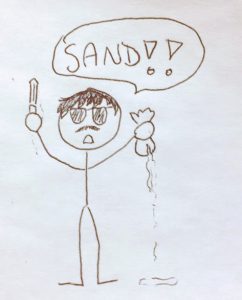
Now let’s talk about “Smeg”.

He’s also a piece of shit who comes from a loving, providing, un-apocalyptic home. His mom even tucks him in at night as he whines that he can’t go and play with Adolf and the rest. This is where you realize that civilization hasn’t crumbled. People still live in nice middle-class homes. People still go to work. People watch TV. People drink New Coke. People are existing and thriving, not living in the beach slums, eating wild (?) pigs. And to do so is by choice.
The apocalyptic backdrop is a facade as a means to an end. The disruption of the earthquake actually means very little, as any situation real or imagined, will have the message of apocalypse, as it is a means for Adolf to control and manage the group to do his bidding:
Any measure is justifiable in this war for survival. If innocent people die, it is unfortunate but a given in a war of survival. All this is heard repeatedly in leadership presentations, and its apocalyptic energy animates the larger movement gatherings.
EZEKIEL, RAPHAEL S. “An Ethnographer Looks at Neo-Nazi and Klan Groups: The Racist Mind Revisited.” American Behavioral Scientist, vol. 46, no. 1, Sept. 2002, pp. 51–71, doi:10.1177/0002764202046001005.
American Nazism’s historic preoccupation with society’s decay and racial erosion demonstrates its anticipation of the arrival of a catastrophic new millennium.
Brad Whitsel (2001) Ideological Mutation and Millennial Belief in the American Neo-Nazi Movement, Studies in Conflict & Terrorism, 24:2, 89-106, DOI: 10.1080/10576100117722
It’s not that the world is in chaos, the Nazi perceive and perpetuate the idea that the world is in chaos to justify their actions – whether its eating a wild pig (?), stealing a purse, or killing a Black man…
Let’s talk about Leroy’s Death (played by Robert Harden).
One study was particularly heartbreaking as it pieced a very tight puzzle to Leroy’s death in the movie to actual homicide victims of Neo-Nazis. Trigger warning; it’s really, really sad.
Victim–offender relationships show that 72.6% of victims had no prior knowledge of their killer(s)
99% [of racially targeted people] (or 59.2% of all victims) were killed because of something they represented, whether a specific race, religion, or even government. Here, the offender had no knowledge of the victim or their personal actions, only that they represented the population the offender was targeting.
Anti-race/ethnic minority victims were also killed more often by a knife, blunt object, or bodily weapon when compared with the anti-abortion and anti-government victims.
…almost 30% of anti-racial/ethnic minority victims were killed while walking or driving on the street.
These victims [racially motivated] had the most violent deaths. Often excessive force was used to beat them to death with blunt objects and bodily weapons. Mutilation and overkill were not uncommon.
The variance in overkill and modus operandi also could be a by product of a subculture of violence, such as those held by neo-Nazis and skinheads.
Parkin, William S., et al. “Ideological Victimization: Homicides Perpetrated by Far-Right Extremists.” Homicide Studies, vol. 19, no. 3, Aug. 2015, pp. 211–236, doi:10.1177/1088767914529952.
So….now what?
This is a very real reality that is still happening to this day, especially as the growth of hate groups and crimes have increased dramatically over the US, and even more, that they are changing. They may not be huge groups, but they are influential groups and they evolve. As two researchers put it:
Social movements in the cultic milieu are by no means stable, nor do their beliefs or organizational patterns remain constant.Rather, groups in this constellation tend to be ephemeral and are governed by a lifecycle process. Over time, these collectivities ultimately fractionate and, in doing so, give birth to new groups. The process is cyclical and facilitates the recycling of ideas (and groups). This continual process of cult birth, reformation, and death suggests that the cultic milieu is a permanent part of society, while the individual cult is a transitory phenomenon.
Brad Whitsel (2001) Ideological Mutation and Millennial Belief in the American Neo-Nazi Movement, Studies in Conflict & Terrorism, 24:2, 89-106, DOI: 10.1080/10576100117722
Low activity is not equivalent to no activity, particularly when white supremacist activity spikes in response to major social change like the election of the country’s first black president.
Cooter, A. (2011), Neo‐Nazi Nationalism. Stud Ethn Nation, 11: 365-383. doi:10.1111/j.1754-9469.2011.01126.x
As fun and campy as this movie is, it is based on fact and fantasy. Unfortunately, in real life, Mamas don’t get to but guns that “take a head off a honkey in twenty paces” and exact revenge. They exist in a culture that created the killer and perpetuates racism (whether loud or quiet) via complacency and institutionalized undertones. And do so, in our norms and conventions, silently.
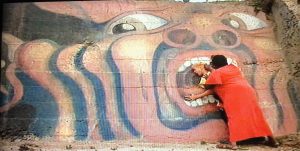
And it’s easy to be complacent and to not understand the institutional affect when you’re far-removed. It’s a understandable reaction to watch this movie and not identify with any of the Nazis because they are so extreme. They cannot be us. We don’t kill people. We don’t paint swastikas on our surfboards.

But…I just want to have fun and watch my movie 🙁
Of course watch this movie and have fun! Watch the hell out of it – I love it! Remember, this is a love story. Enjoy the camp, enjoy the revenge and goofy surfing. It’s there for you to enjoy and love as your own.
But it’s also a great moment to contemplate, to take a step back and think, especially for us honkeys (we honkeys?). Some great advice for this can, of course, be found in multiple sources, but taking from Ezekiel’s final thoughts on the matter in his paper on Neo-Nazism in America:
Probably the greatest effect of White racism today is its capacity to slow institutional change. Policies that help institutional racism to continue to flourish do much more to hurt minority people than do hate crimes.
And it is worth noting that the neo-Nazis are not totally alien to White Americans. A social attitude does not exist in the mind as an isolated single entity. Real attitudes, or orientations, are laid down throughout life in layer after layer.
The task is to get acquainted with those layers of oneself—to learn to recognize them and not be frightened by them. It is not a disgrace to have absorbed some racism. It is a disgrace not to know it and to let those parts of ourselves go unchecked.
It’s easy not to have a switchblade swastika board, but it’s becomes convoluted if you defend saying the n word, or roll your eyes at #whiteoscars. Its the latter that fuels the former and is the foundation on which its built.
The Bottom-line:
Oh…you’re still here? That’s surprising.
 (5 / 5)
(5 / 5)
Don’t judge me.
Movies n TV
Wheel of Time A Question of Crimson Is a Political Espionage Delight
Episode two of Wheel of Time felt like the beginning of a long journey. Stories are unfolding, lives are changing, and blood is spilling.
Let’s discuss.
The story
We begin this episode in the past with Elayne’s mother, Queen Morgase. It turns out her rise to the throne was a bit, shall we say, cutthroat. So when she shows up at the White Tower, Siuan is concerned.
She might have reason to be, too.
Meanwhile, Rand, Egwene, Moiraine, Lan and Aviendha are in the Spine of The World. As they travel through some of the most breathtaking lands I have ever seen on a TV show, Egwene is plagued with nightmares. We think at first that’s just her trauma working itself through her system. But we soon find out that it might not be that straightforward.
Finally, Perrin returns home to heal after his hand is almost cut in half. But when he gets there he finds the town has been infested by Children of The Light. And they’re looking for him.
What worked
There was something heartwarming in this episode about political espionage and choking religious persecution. And that is Elayne’s relationship with her family.
I have consumed a lot of fantasy content with royal families. And I have never once heard a princess call her mother ‘Mum’. I’ve never seen royal siblings get along. And I have sure as hell never seen a princess have a good relationship with her step-parent.
This was refreshing. Even though Queen Morgase is kind of a horrible person she seems like a good mother. And that’s an unexpected delight.

Of course, this is just one storyline among many. And while this can sometimes be overwhelming, in this case it wasn’t.
I’ll be honest, some of these storylines are going to drag for me. I know this because I’ve read some of the Wheel of Time books and I have an idea that not all the characters exactly pique my interest.
No one likes all the characters. No one likes all the storylines. While I am here for the political espionage between Queen Morgase and Siuan, not everyone likes it. While others might be fascinated with Selene trying to win Rand back, I couldn’t care less.
Having multiple storylines keeps everyone’s attention better. So long as things don’t get out of hand. Things can easily get out of hand. But this seems to be managed well.
So far.
What didn’t work
As I mentioned above, I’m not thrilled with Rand’s story at this point. And while it’s fine to not like a storyline when there are this many to choose from, it’s not fantastic that the one I like the least is the one involving our two main characters. And anytime we were with the team at the Spine of The World, the only thing that brought me joy was Moirain’s hat. It reminded me of Stockard Channing’s hat in Practical Magic.
The problem is that Rand is Charlie Brown with controversial magical powers. He is boring, serious, and pessimistic.
And yes, I understand that he has a heavy emotional burden and he’s the Dragon Reborn and that’s quite taxing and all. But let’s be fair, there isn’t a single person in this show that doesn’t have a heavy burden. And most of them manage to be fun occasionally.

All that being said, this episode of Wheel of Time did exactly what it needed to do. It set up conflicts at each of the three locations. It established emotional ties between the characters and the events. And it established goals for everyone.
This was, in short, a solid episode. Not groundbreaking, not mind-blowing or life changing. It was simply good. It was entertaining and moved the plot forward.
Well done.
 (3.5 / 5)
(3.5 / 5)
Movies n TV
Wheel of Time Returns With A Bang
Wheel of Time is back for season three. There are mixed feelings regarding this. Last season, there were some serious pacing issues. And some serious sticking to the book’s storyline issues. But we’re two seasons in, and we don’t give up so easily. So let’s dive into episode one, To Race the Shadow.
By the way, I highly recommend watching this episode with the subtitles on. You’ll see why.
The story
We begin this episode with Liandrin facing a trial of sorts for her rampant betrayal. She does her best to gaslight her Aes Sedai sisters into thinking that Siuan Sanche is the real traitor.
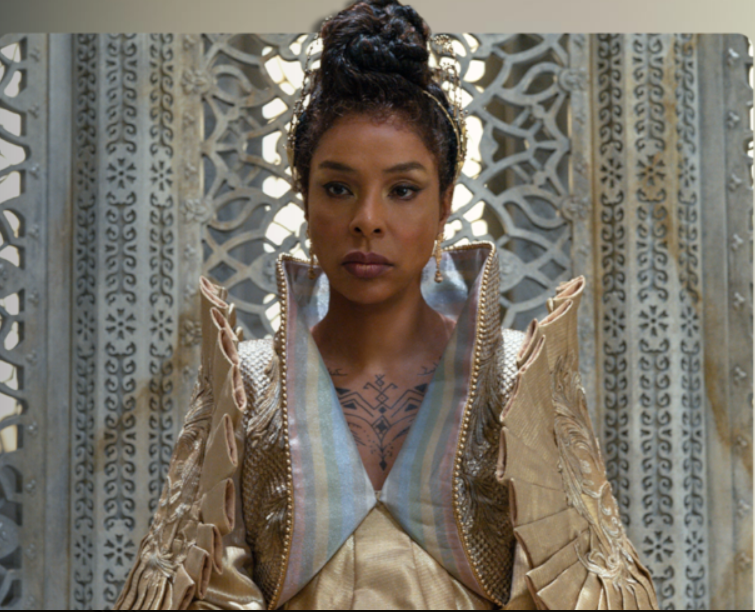
When that doesn’t work, she reveals how many Black Aes Sedai have actually infiltrated the tower.
Spoiler, it’s a lot.
In the aftermath, our whole team gathers to drink and enjoy one night of relaxation before they head out to the Tear to form an army for Rand. All is going well until they’re attacked by myriad creatures and a sentient axe.
What worked
This episode was long. It had a run time of an hour and eleven minutes. And a lot of that run time was spent in heavy dialog scenes.
Fortunately, these were well-done scenes.
If you’re going to have a lot of talking scenes, there are good ways and bad ways to do it. Last season, we saw lots of examples of the bad way to do it. But this episode did it well. For one thing, other things were going on while conversations were taking place. The characters are drinking, playing games, walking through an interesting city. And the scenes themselves didn’t stretch out. They weren’t repetitive. We heard what the character had to say, then we moved on.
It was also nice that the point of these scenes wasn’t just info dumps. We had character development. We had romantic interactions. We had plot development and foreshadowing.
Overall, this episode felt like what it was. A moment of calm before a storm.
Taking a step back, I’d be remiss if I didn’t address the fight scene at the start of the episode. Because it was epic.
The magic looked amazing. The martial arts that went along with it looked fantastic. The costumes were beautiful. It was just incredibly fun to watch.
More than that, it was emotional. We lost some characters in that fight that were important. And it was clearly emotionally shattering for many of our characters, who found themselves betrayed by people they trusted.
So many of them.
It was a great way to open the season.
What didn’t work
Despite that, this episode wasn’t without its flaws.
First off, there were a lot of dialog scenes. And they were good scenes, as I’ve already discussed. But it was one after another after another. And when your episode is, again, an hour and eleven minutes, it’s maybe a little much to have so much chit-chat. Couldn’t some of these conversations, important as they were, have been moved to maybe another episode?
Finally, I want to talk about Egwene’s travel through the arches.
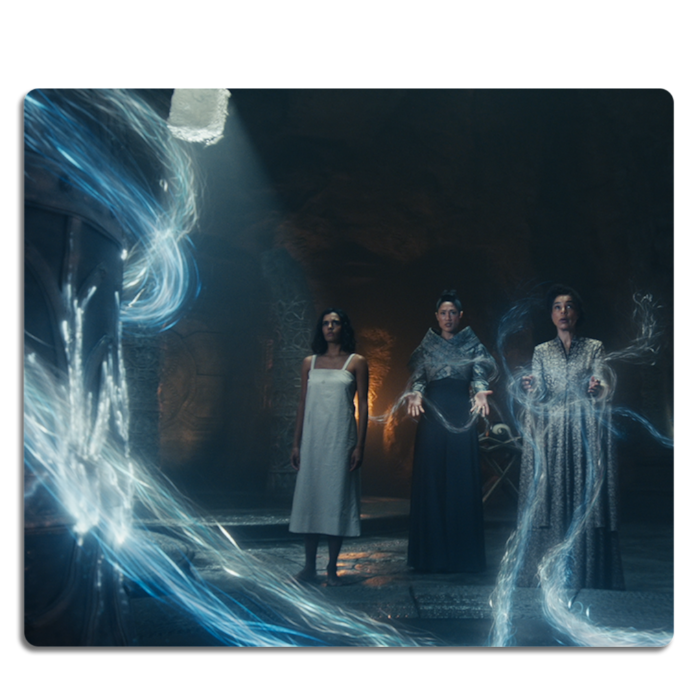
I feel like maybe there were some deleted scenes here. Because there must have been more to that visit than what we saw, right?
We could have seen Egwene battle Rand. That would have been badass and emotionally devastating. We could have seen her with a quiet life with Rand back home at the Two Rivers. We could have seen anything except for the quick clip of Rand in a bloody river, followed by Egwene being shoved back out in a bloody shift.
Bad job. But at least it wasn’t an extended scene of Moiraine collecting bathwater, and then taking a bath while looking sad. If we’d started this season with another scene like that, it might have broken my brain.
Amazon dropped the first three episodes at once. So we’ll be back soon to talk about episode two. See you then.
 (4 / 5)
(4 / 5)
Movies n TV
Entertaining as hell: Eight Legged Freaks (2002) Review
Early 2000s is a special era for the industry. It accepts the cheesiness and corniness of movie making, in turn producing some gems in their own right. Eight Legged Freaks starring David Arquette and young Scarlet Johanson is a horror comedy about giant spiders who overtake a small town. As crazy as that premise sounds, the movie surprisingly has a ton of heart and is super entertaining. Let’s review, shall we?
Plot
We start Eight Legged Freaks with a shot of toxic waste spilling into the water supply of Joshua, a spider farm owner. He is friends with Mike, one of our protagonists, who is a science geek and a spider enthusiast. Mike notices something quite right upon visiting Joshua, but no one takes him seriously. We are then introduced to the rest of the crew. Mike’s mother Samantha, the town sheriff, is too busy chasing Ashley, his sister, who is dating the town mayor’s son Bret (something Samantha does not approve of). We also have Chris, who returns to the town to save his father’s legacy in the town mines. He has opposition from Wade, Bret’s father, who wants to use the mines for his business ventures. Lots of drama going on that will only get juicier once the spiders get loose.
The creepy crawlies quickly dispose of Joshua and make their grand appearance after Ashley rejects Bret’s advances, abandoning him in the middle of a desert. A glorious chase sequence ensues as the spiders make their way towards the town, wreaking havoc on its residents. In a true horror fashion (which the movie acknowledges), it takes some convincing from Mike and then from Samantha for the town to take the threat seriously. The tongue-in-cheek style of narrative adds the comedy aspect to a movie that would otherwise burn out fairly quickly.
The remaining characters hide out in a shopping mall as it’s the only somewhat sturdy building in the area. This doesn’t last long as the spiders break in, forcing them to run through the mines. Their resources to fight the creepy crawlies off are limited as the methane gas doesn’t allow them to use firearms. Such conditions require resourceful thinking from Chris, who uses perfume to fend off the leader of the spider group and save himself during the climax of the movie.
Character dynamics are not forgotten once the action kicks in. We have Chris confessing his long-term feelings for Samantha which she knew all along, which provided some comedic relief. Bret also reunites with Ashley and apologises for being an asshole. Mike finally gets the appreciation he deserves as his knowledge saves the townsfolk more than once during the whole ordeal.
We end the movie with the town’s radio show person telling the story as an urban legend during his segment. This brings it into question – how much of it happened the way he said it did? We can only guess…
Overall thoughts
Eight Legged Freaks is a fun creature feature with some self-aware commentary on genre tropes that doesn’t take itself too seriously. The acting is good, the pacing fitting and the characters are likeable enough for you to want them to make it through. Definitely a must watch, if you don’t suffer from arachnophobia, that is.
 (5 / 5)
(5 / 5)

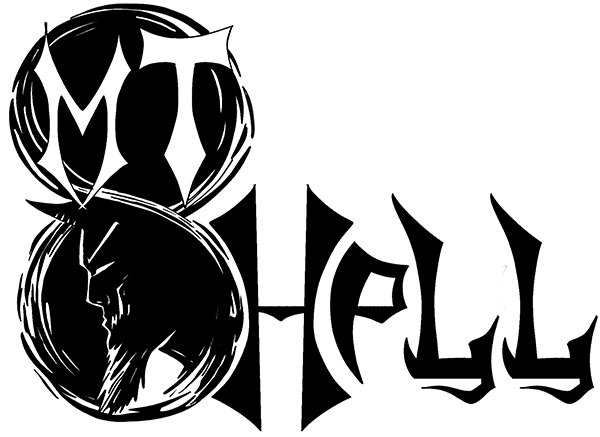



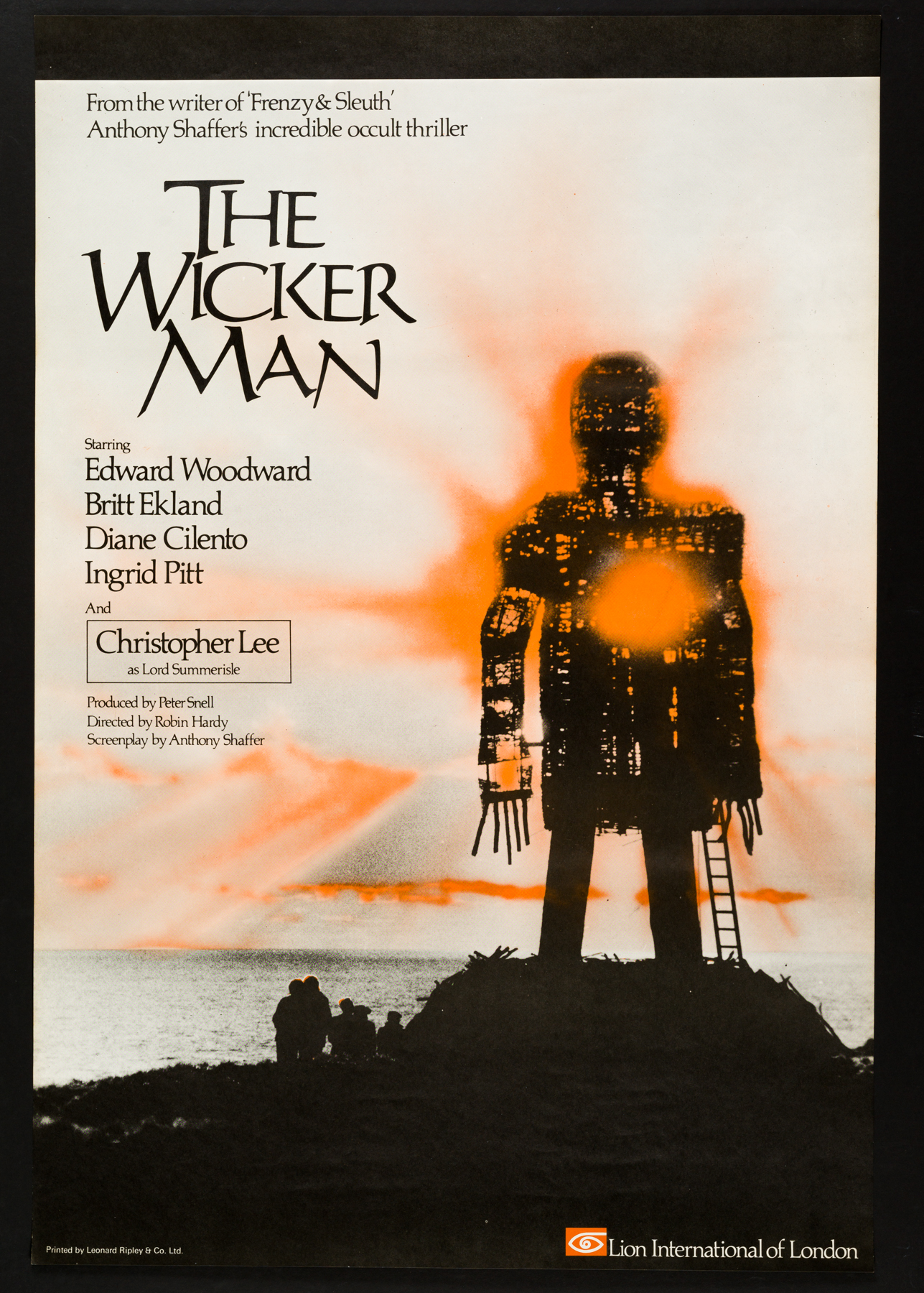
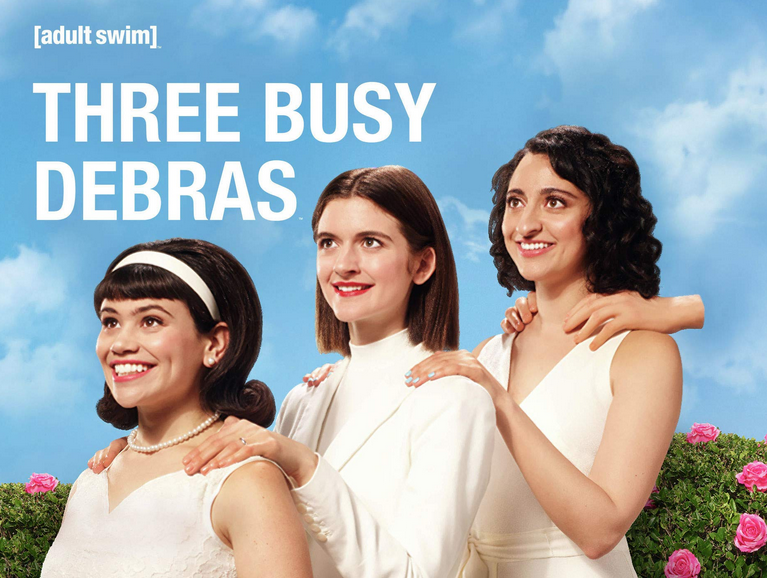
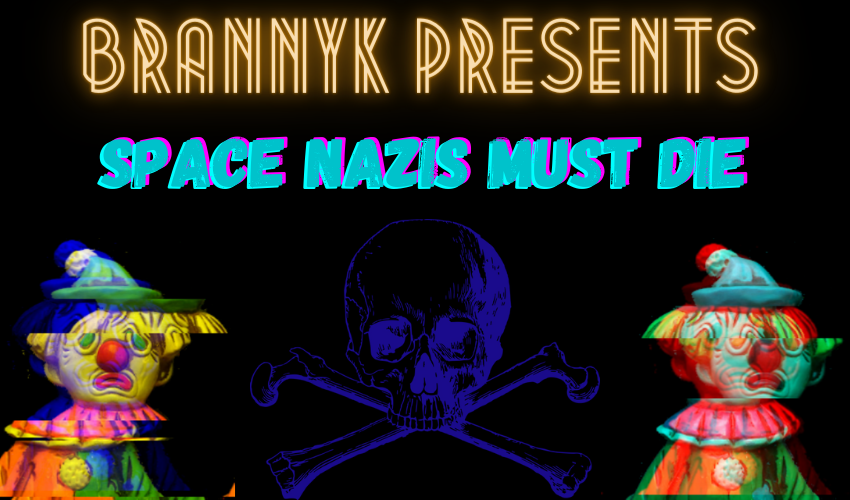
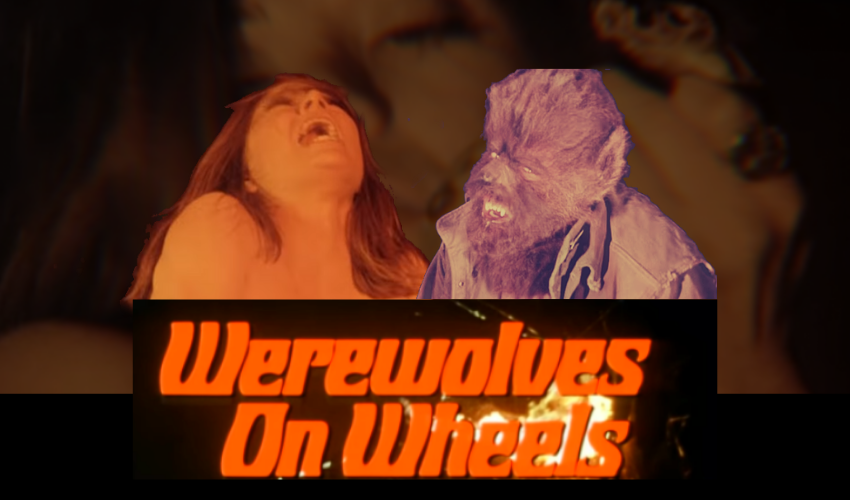
John Combo
February 29, 2020 at 12:54 pm
Even the trailer is awesome! They actually put this in line with The Road Warrior and The Terminator! I’m not even sure if they weren’t trying to be serious! Awesome review!
Patricia Dartt
March 1, 2020 at 2:56 pm
Awesome review. Actual thought on the movie not just glossed over fun or not fun. Not just talk about the visual aspects or acting. I like that you really researched here. You also mentioned the typical acting and cinematography and fun factors anyone would expect. Good job.
Pingback: When Films Go Too Far I Can Help - Haunted MTL